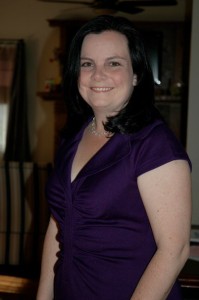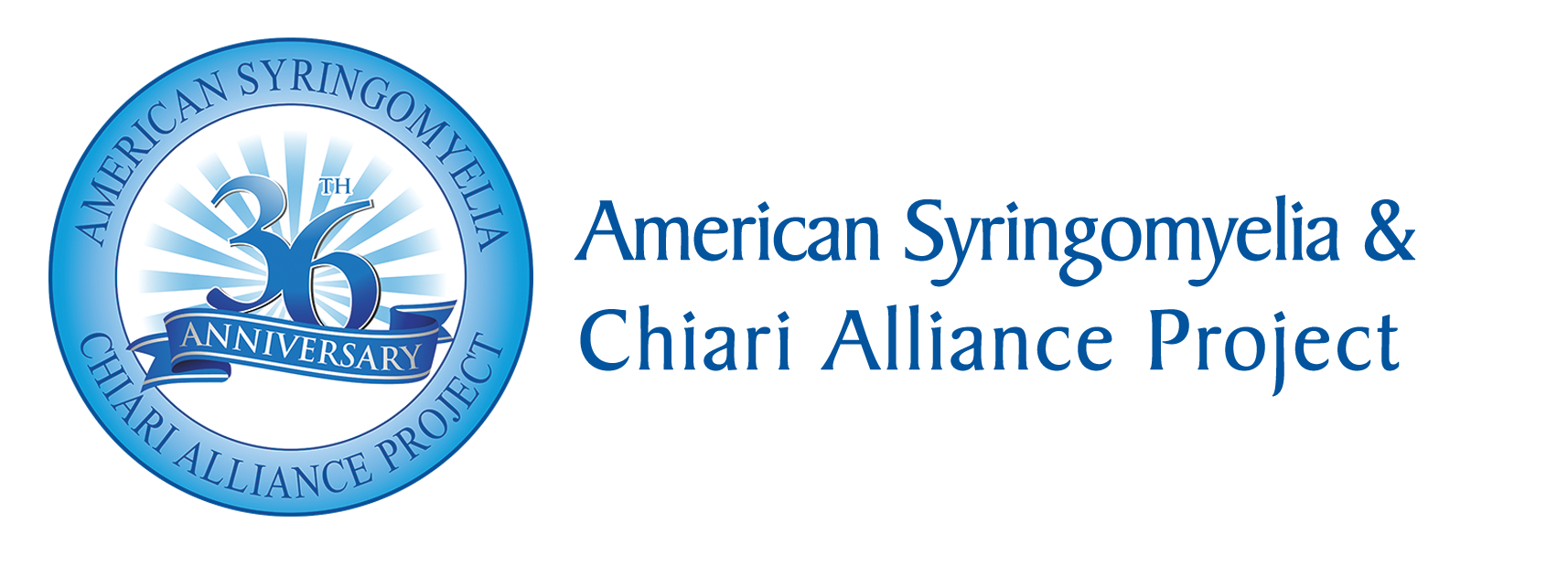 My name is Shananne Hutter and up until the age of 30 I had a happy, normal life. In 1999, I was involved in a car accident. I was having all kinds of symptoms, ranging from seemingly minor things like tinnitus (ringing in my ears), to major headaches and neck and shoulder pain. I was diagnosed with syringomyelia.
My name is Shananne Hutter and up until the age of 30 I had a happy, normal life. In 1999, I was involved in a car accident. I was having all kinds of symptoms, ranging from seemingly minor things like tinnitus (ringing in my ears), to major headaches and neck and shoulder pain. I was diagnosed with syringomyelia.
Syringomyelia (sear-IN-go-my-EEL-ya) occurs when a tubular cavity (syrinx) develops within the spinal cord, caused by an obstruction of the cerebrospinal fluid circulatory pathways. I was told that I had a Chiari malformation type I as an aside because I didn’t meet the criteria stated in the medical journals. The doctors did not seem overly concerned, so I just dealt with my symptoms and moved on. In 2000, I married and got pregnant with my first child. At the time, I was under the care of a neurologist who told me it would be fine to have an epidural. The doctor’s advice, and the three attempts it took to get the epidural in, proved to be the beginning of the end of life as I had known it. After I gave birth, I couldn’t function. By this I mean my head felt like a brick house had landed on it with violent force and was slowly going to push its way down until it hit my feet. My days and nights were extremely painful physically and emotionally. The simplest tasks were unbearable. Some days I couldn’t even lift my head off my pillow. My mind was in such a fog and my body was so heavy and in pain. I didn’t know what was happening to me and my family, friends and doctors wanted me to ‘snap out of it’. I was told I was depressed and that I had post-partum depression. I couldn’t snap out of it. So I began doing research. I found The Chiari Institute (www.thechiariinstitute.com) in Great Neck, New York, and the doctors that literally saved my life. I was sent for testing and imaging, which led to a diagnosis of Chiari malformation type I in addition to the syringomyelia.
I had surgery in 2003. The doctors told me once they opened me up that I had had zero CSF (cerebral spinal fluid) flow! My tonsils (the part of the cerebellum that was protruding downward, blocking the flow of CSF around my spinal cord) were herniated much more than they had expected. Basically, I would have eventually become paralyzed and died if I had decided that I was too scared to have the surgery, leaving my husband and then 18-month-old daughter alone.
My research also led me to the American Syringomyelia and Chiari Alliance Project website. ASAP is a nonprofit organization established over twenty years ago to help patients and support desperately needed research. Its website is well organized and has valuable information and resources for those looking for information about Chiari and syringomyelia. Today I am able to at least function on a daily basis with the help and support of my family and friends. I still have severe headaches, vertigo, tinnitus, POTS (postural orthostatic tachycardia syndrome), right-sided parasthesia, neck and back pain, and difficulty remembering things.
I have also recently been diagnosed with tethered cord syndrome. Tethered spinal cord syndrome (TCS) is a neurological disorder caused by tissue attachments that limit the movement of the spinal cord within the spinal column. These attachments cause an abnormal stretching of the spinal cord. The course of the disorder is progressive. In children, symptoms may include lesions, hairy patches, dimples, or fatty tumors on the lower back; foot and spinal deformities; weakness in the legs; low back pain; scoliosis; and incontinence. Tethered spinal cord syndrome may go undiagnosed until adulthood, when sensory and motor problems and loss of bowel and bladder control emerge. This delayed presentation of symptoms is related to the degree of strain placed on the spinal cord over time. Tethered spinal cord syndrome appears to be the result of improper growth of the neural tube during fetal development, and is closely linked to spina bifida. Tethering may also develop after spinal cord injury and scar tissue can block the flow of fluids around the spinal cord. Fluid pressure may cause cysts to form in the spinal cord, a condition called syringomyelia. This can lead to additional loss of movement, feeling or the onset of pain or autonomic symptoms (information taken from National Institute of Neurological Disorders and Stroke).
Although my daily symptoms are annoying at the least, and debilitating more often than I would like, I find strength in the hope that one day Chiari malformation and syringomyelia will be given the recognition they need in order for others not to be misdiagnosed and misled. It is imperative that more research be done, that the education of radiologists and neurologists/neurosurgeons includes Chiari and syringomyelia.
Current statistics suggest that there are as many as 350,000 people in the United States with Chiari malformation and syringomyelia. However, that number may actually be much higher. There are probably many people out there who are asymptomatic. Or people who have many uncategorized and non-specific symptoms that have been misdiagnosed, like mine were after my car accident.
There is no cure yet for Chiari or syringomyelia. And since these conditions are being considered to be congenital, I am very worried that my two young daughters will have either one or both conditions. My girls are the main reason I volunteered to organize a fundraiser. I want to raise awareness and funding for research. On April 8, 2011, the American Syringomyelia & Chiari Alliance Project (ASAP) will host a Spring Gala, its first fundraising event on Long Island. The Gala will honor Dr Roger Kula from The Chiari Institute and Dr Harold Rekate who will take over as Director of Neurosurgery at the Chiari Institute in late February. The event will also feature a silent auction and raffles. I am honored to be the event’s Chairperson and hope it will be the beginning of good things to come.
Back to main page

